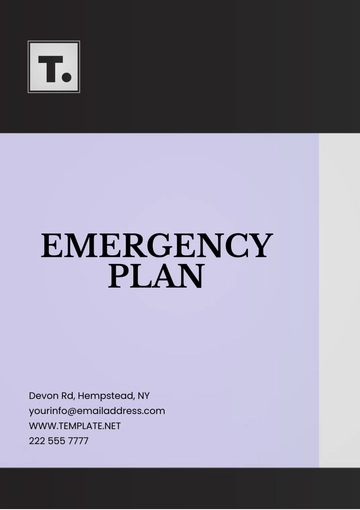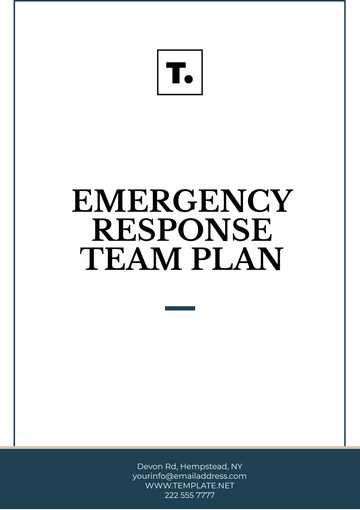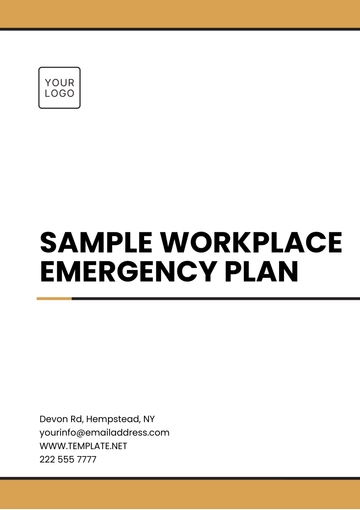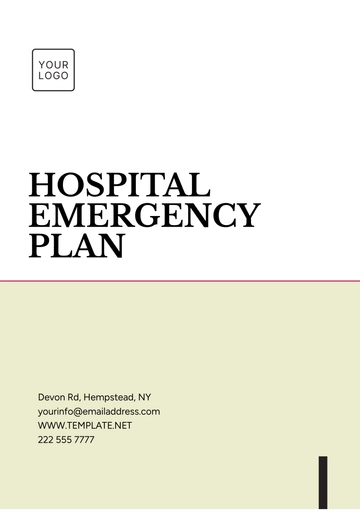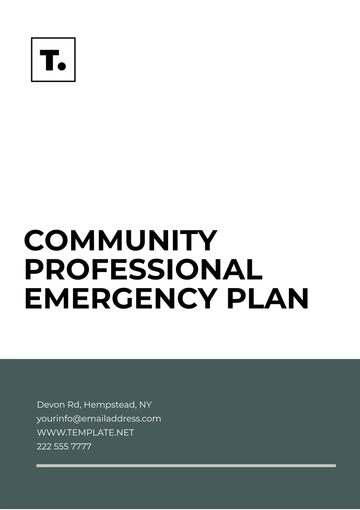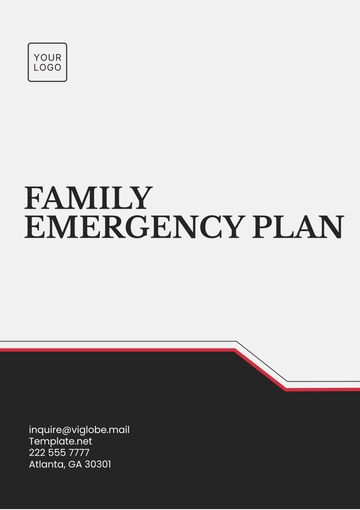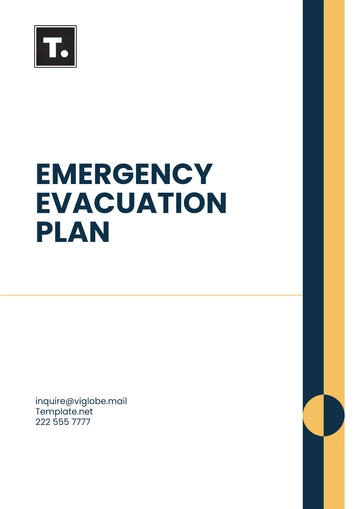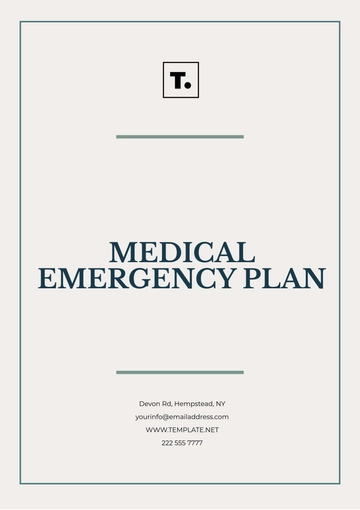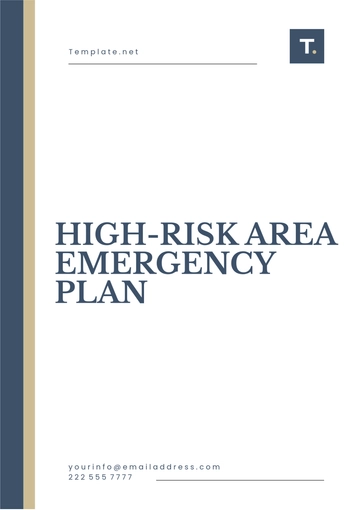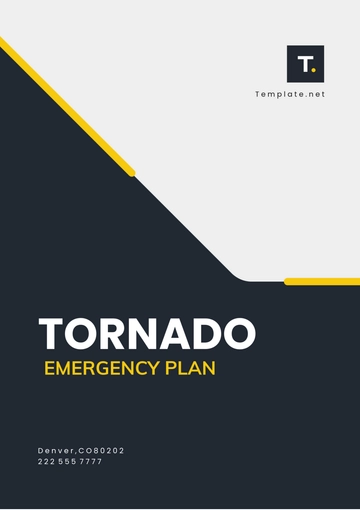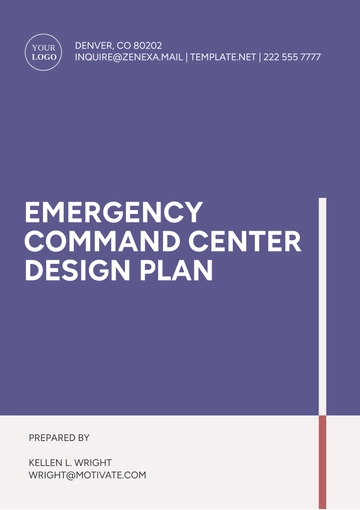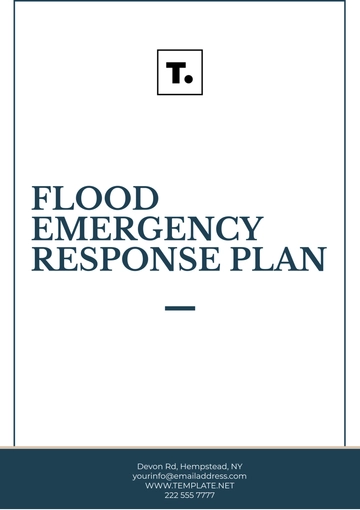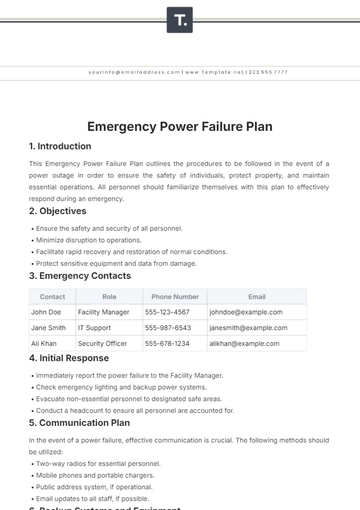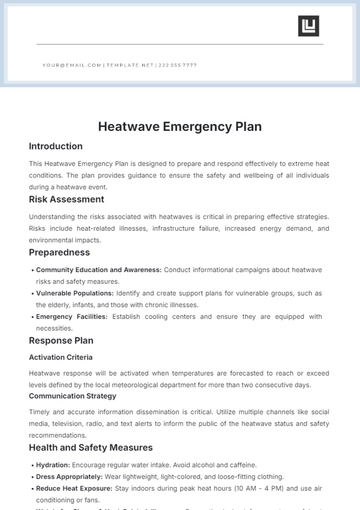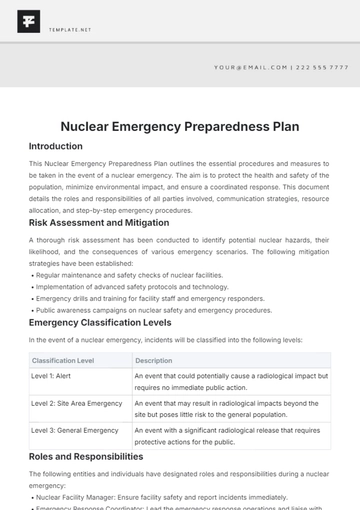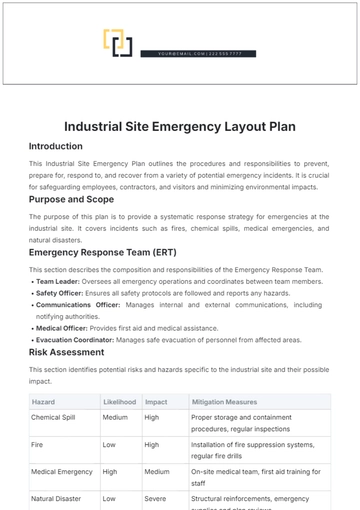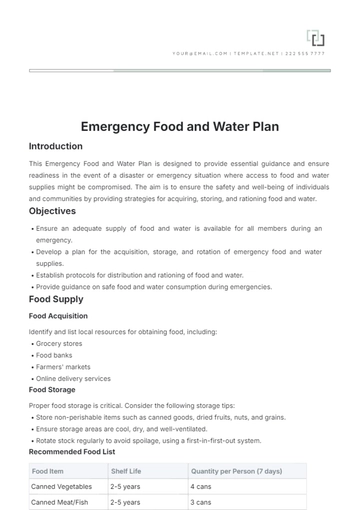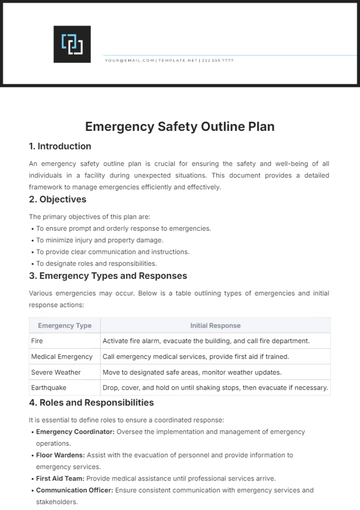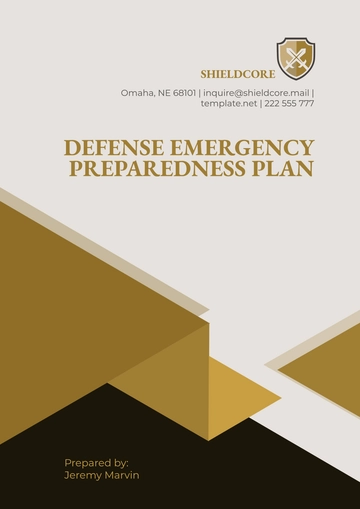Free Emergency Response Team Plan Team
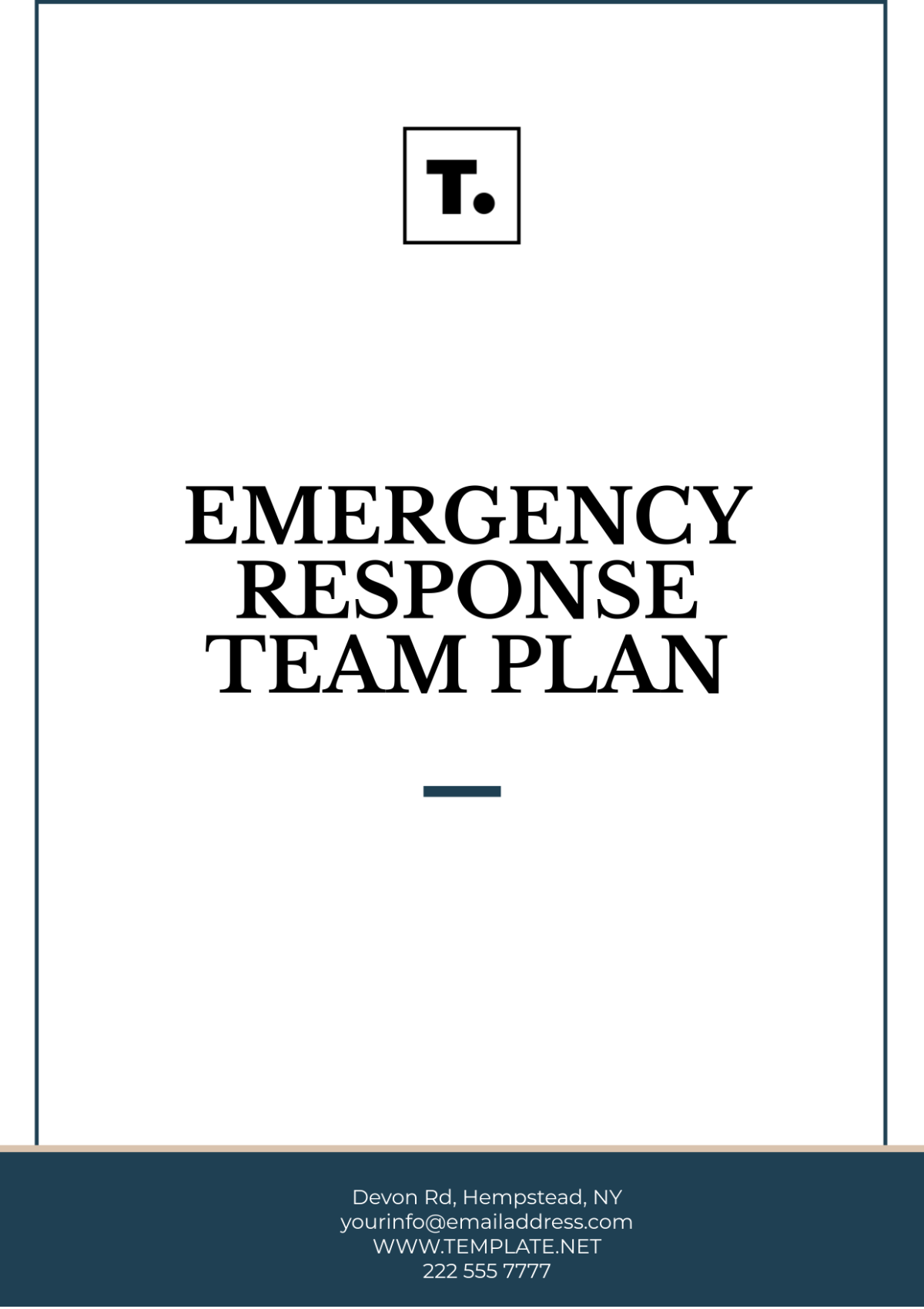
Introduction
The Emergency Response Team Plan (ERT Plan) is a vital document designed to provide a well-structured and comprehensive approach to managing emergencies that may threaten personnel, operations, property, and the environment. This plan outlines critical roles, responsibilities, and step-by-step procedures necessary for an efficient and organized response to emergencies. The ultimate goal is to ensure that all emergencies are addressed swiftly, minimizing harm and disruption to business continuity.
Objectives
The main objectives of the Emergency Response Team Plan are to:
Ensure the safety and well-being of all individuals present during an emergency.
Minimize damage to property and operations through a quick and coordinated response.
Establish clear communication channels to provide timely and accurate information during emergencies.
Define specific roles and responsibilities for team members to avoid confusion and improve response efficiency.
Regularly train and evaluate the emergency response system, ensuring readiness and adherence to best practices.
Team Roles and Responsibilities
Each Emergency Response Team (ERT) member is assigned specific duties essential to managing and responding effectively to incidents. Below are the primary roles and their respective responsibilities:
Incident Commander
Has overall responsibility for managing and directing all emergency operations.
Coordinates with external emergency services (e.g., fire department, paramedics) and internal stakeholders.
Establishes the command center, organizing response efforts and allocating resources.
Ensures all team members are following the Emergency Response Plan and monitors the overall progress of the response.
Safety Officer
Monitors safety conditions on-site and develops proactive measures to safeguard personnel.
Provides the Incident Commander with regular updates and advises on all safety-related issues.
Ensures that safety protocols are enforced, including the use of protective equipment and adherence to evacuation plans.
Liaison Officer
Serves as the primary point of contact for external agencies, such as local emergency responders and governmental organizations.
Facilitates communication between the ERT and any external parties, ensuring that accurate information is shared.
Coordinates the arrival and integration of external support teams into the emergency response.
Operations Chief
Responsible for developing and implementing tactical objectives to address the specific emergency.
Manages all resources (equipment, personnel, etc.) assigned to the operations section.
Ensures that response actions are executed efficiently and in line with safety standards.
Emergency Communication Plan
Effective communication is the backbone of any successful emergency response. The Emergency Communication Plan guarantees that all parties receive timely, clear, and accurate information to avoid confusion or misinformation during a crisis. The key components of the communication plan include:
Establishing reliable communication channels, such as radios, mobile phones, and internal email systems.
Designating a spokesperson to handle communication with external organizations (media, public agencies) to ensure consistency and accuracy in public messaging.
Providing regular updates to all team members, employees, and other stakeholders, including status reports and safety instructions throughout the incident.
Backup communication systems to be used in case of failure or disruption of primary channels.
Emergency Procedures
The following section outlines specific procedures for managing common emergencies:
Fire Emergency
Activate the nearest fire alarm to alert others.
Evacuate the building immediately using the nearest safe exit, avoiding elevators.
Once outside, contact the fire department and provide details on the situation.
Do not re-enter the building until declared safe by fire officials.
Medical Emergency
Call emergency services immediately and provide the location of the injured person.
If qualified, administer basic first aid to stabilize the injured individual.
Keep the injured person safe and comfortable until professional help arrives.
Severe Weather (Tornadoes, Hurricanes, etc.)
Monitor weather reports and heed any government-issued alerts or warnings.
Move personnel to designated safe areas within the facility (e.g., storm shelters, safe rooms).
Maintain continuous communication with the Incident Commander for further instructions.
Training and Drills
Preparedness is key to effective emergency management. The Emergency Response Team must engage in regular training exercises and conduct drills to ensure their readiness. A robust training plan should include:
Annual full-scale emergency drills simulating a variety of potential emergencies.
Quarterly tabletop exercises, providing opportunities to review and discuss emergency scenarios without full-scale activation.
Monthly equipment checks and maintenance to verify that all tools and resources are functional.
Regular updates to emergency contact lists, ensuring that information is current and readily accessible.
Assessment and Improvement
Continuous improvement is essential to refining the Emergency Response Team Plan. After every emergency or drill, a post-incident assessment must be conducted. This evaluation identifies strengths and weaknesses in the response, ensuring better performance in the future. Steps include:
Debrief meetings with all stakeholders, including ERT members, external responders, and affected personnel.
Review incident reports, focusing on response times, resource usage, and adherence to protocols.
Implement updates and changes to the plan based on lessons learned during the incident or drill.
Distribute revised protocols to ensure all team members are aware of changes.
Conclusion
The Emergency Response Team Plan serves as a critical framework for ensuring the safety and security of personnel, assets, and operations during an emergency. Through clear roles, detailed procedures, continuous training, and rigorous assessments, the ERT will remain prepared to respond swiftly and effectively to any emergency. Regular revisions and improvements to the plan will ensure its ongoing relevance and effectiveness.
- 100% Customizable, free editor
- Access 1 Million+ Templates, photo’s & graphics
- Download or share as a template
- Click and replace photos, graphics, text, backgrounds
- Resize, crop, AI write & more
- Access advanced editor
Ensure your organization is prepared for any emergency with the customizable Emergency Response Team Plan Template, offered by Template.net. This downloadable and printable resource provides a structured plan for swift action in crisis situations. Editable in our AI Editor Tool, you can easily tailor the document to fit your team’s specific needs. Stay ready and organized with this essential, user-friendly template.
You may also like
- Finance Plan
- Construction Plan
- Sales Plan
- Development Plan
- Career Plan
- Budget Plan
- HR Plan
- Education Plan
- Transition Plan
- Work Plan
- Training Plan
- Communication Plan
- Operation Plan
- Health And Safety Plan
- Strategy Plan
- Professional Development Plan
- Advertising Plan
- Risk Management Plan
- Restaurant Plan
- School Plan
- Nursing Home Patient Care Plan
- Nursing Care Plan
- Plan Event
- Startup Plan
- Social Media Plan
- Staffing Plan
- Annual Plan
- Content Plan
- Payment Plan
- Implementation Plan
- Hotel Plan
- Workout Plan
- Accounting Plan
- Campaign Plan
- Essay Plan
- 30 60 90 Day Plan
- Research Plan
- Recruitment Plan
- 90 Day Plan
- Quarterly Plan
- Emergency Plan
- 5 Year Plan
- Gym Plan
- Personal Plan
- IT and Software Plan
- Treatment Plan
- Real Estate Plan
- Law Firm Plan
- Healthcare Plan
- Improvement Plan
- Media Plan
- 5 Year Business Plan
- Learning Plan
- Marketing Campaign Plan
- Travel Agency Plan
- Cleaning Services Plan
- Interior Design Plan
- Performance Plan
- PR Plan
- Birth Plan
- Life Plan
- SEO Plan
- Disaster Recovery Plan
- Continuity Plan
- Launch Plan
- Legal Plan
- Behavior Plan
- Performance Improvement Plan
- Salon Plan
- Security Plan
- Security Management Plan
- Employee Development Plan
- Quality Plan
- Service Improvement Plan
- Growth Plan
- Incident Response Plan
- Basketball Plan
- Emergency Action Plan
- Product Launch Plan
- Spa Plan
- Employee Training Plan
- Data Analysis Plan
- Employee Action Plan
- Territory Plan
- Audit Plan
- Classroom Plan
- Activity Plan
- Parenting Plan
- Care Plan
- Project Execution Plan
- Exercise Plan
- Internship Plan
- Software Development Plan
- Continuous Improvement Plan
- Leave Plan
- 90 Day Sales Plan
- Advertising Agency Plan
- Employee Transition Plan
- Smart Action Plan
- Workplace Safety Plan
- Behavior Change Plan
- Contingency Plan
- Continuity of Operations Plan
- Health Plan
- Quality Control Plan
- Self Plan
- Sports Development Plan
- Change Management Plan
- Ecommerce Plan
- Personal Financial Plan
- Process Improvement Plan
- 30-60-90 Day Sales Plan
- Crisis Management Plan
- Engagement Plan
- Execution Plan
- Pandemic Plan
- Quality Assurance Plan
- Service Continuity Plan
- Agile Project Plan
- Fundraising Plan
- Job Transition Plan
- Asset Maintenance Plan
- Maintenance Plan
- Software Test Plan
- Staff Training and Development Plan
- 3 Year Plan
- Brand Activation Plan
- Release Plan
- Resource Plan
- Risk Mitigation Plan
- Teacher Plan
- 30 60 90 Day Plan for New Manager
- Food Safety Plan
- Food Truck Plan
- Hiring Plan
- Quality Management Plan
- Wellness Plan
- Behavior Intervention Plan
- Bonus Plan
- Investment Plan
- Maternity Leave Plan
- Pandemic Response Plan
- Succession Planning
- Coaching Plan
- Configuration Management Plan
- Remote Work Plan
- Self Care Plan
- Teaching Plan
- 100-Day Plan
- HACCP Plan
- Student Plan
- Sustainability Plan
- 30 60 90 Day Plan for Interview
- Access Plan
- Site Specific Safety Plan
